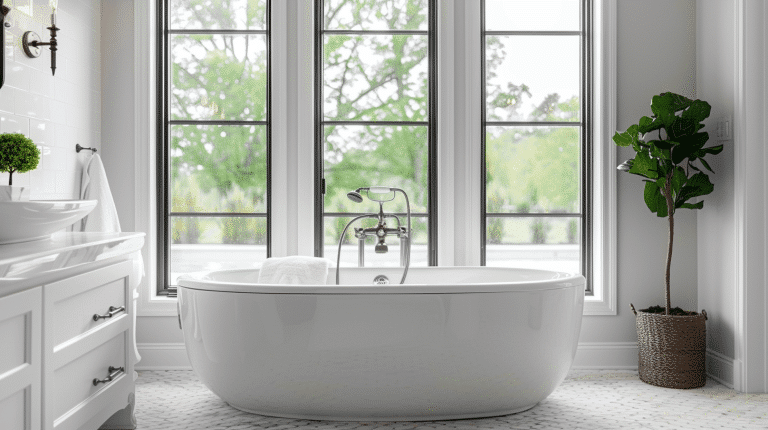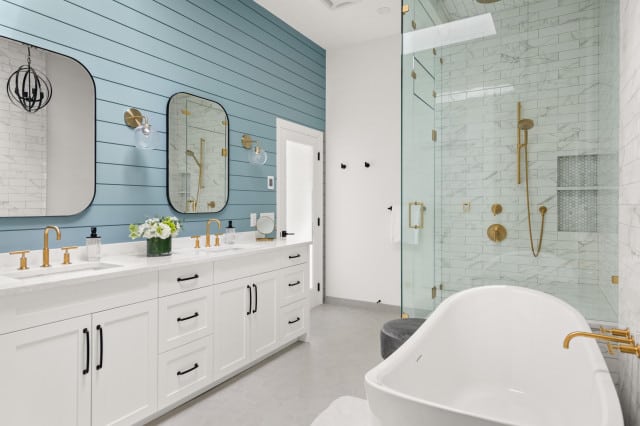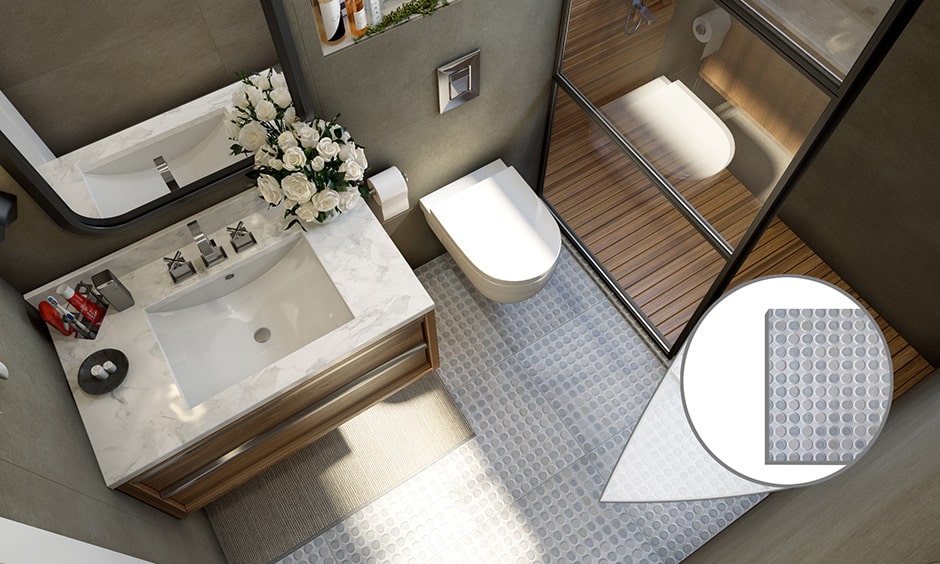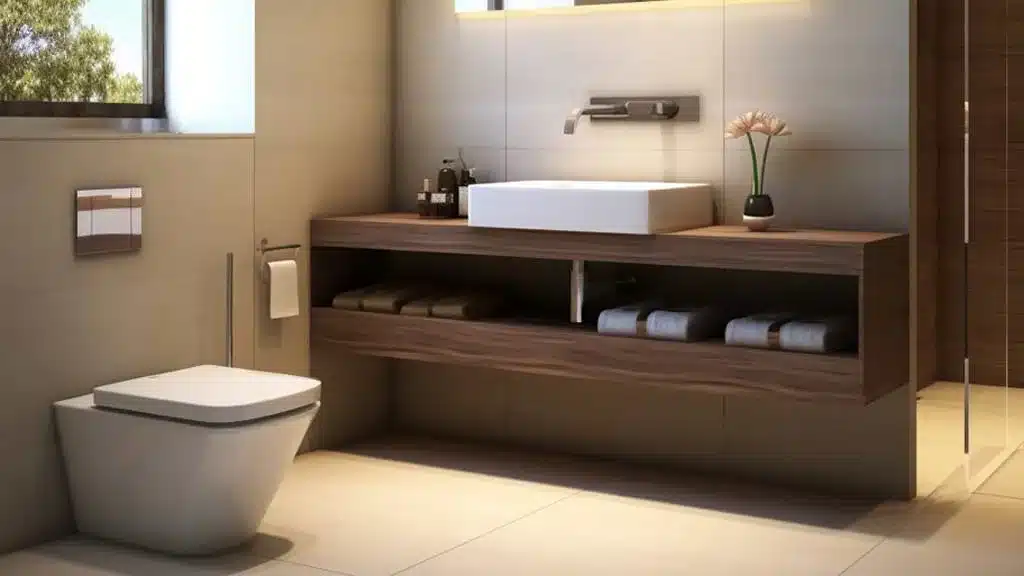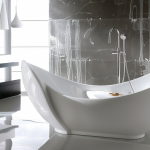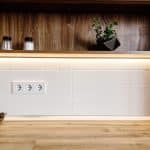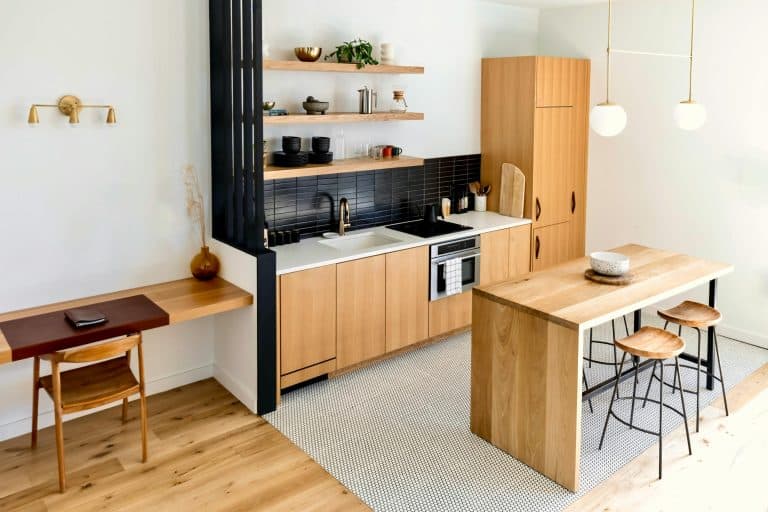Choosing the perfect bathroom fixtures is a crucial step in creating a space that reflects personal style while staying within budget. With numerous options available, deciding on the best fittings can be overwhelming. This listicle will provide helpful tips and considerations to make the process easier.
Understand Your Bathroom Style
The first step is understanding the desired style. Is the preference modern, traditional, or transitional? Modern fixtures are often sleek with clean lines, while traditional fixtures feature more ornate details. For a contemporary touch, consider a frameless shower enclosure, which offers a clean and minimalist aesthetic.
Transitional ones combine elements of both styles for a balanced look. Identifying the overall style will narrow down the fitting options and ensure a cohesive design. This approach will also help select complementary colors and materials, enhancing the bathroom’s visual appeal.
Set a Realistic Budget
Setting a realistic budget is essential before shopping for bathroom fixtures. Prices might vary greatly depending on the materials, brand, and style. Determine the amount allocated for each fitting, such as faucets, showerheads, and lighting.
Sticking to a budget will assist in preventing overspending and will make the selection process more manageable. Additionally, consider setting aside a small contingency fund to cover any unexpected expenses.
Prioritize the ones that are most important to you to ensure you allocate funds appropriately. Reviewing average costs and completing market research can provide a better idea of what to expect. This careful planning will help you achieve a balanced and well-appointed bathroom within your financial limits.
Consider Fixture Material
The material of bathroom fixtures plays a significant role in their appearance and durability. Common materials include chrome, brushed nickel, stainless steel, and brass. Chrome is a popular choice due to its affordability and easy maintenance, while brushed nickel offers a more subdued finish. Stainless steel is known for its durability, and brass adds a touch of luxury.
Each material has pros and cons, so consider aesthetics and practicality. It’s also wise to consider the long-term wear and tear each material might endure in a bathroom environment. Selecting the suitable material can significantly impact the longevity and maintenance needs of your fittings.
Moreover, some materials are more resistant to corrosion and tarnishing, which is crucial in a humid bathroom setting. Balancing beauty and resilience will ensure it remains functional and attractive for years.
Evaluate Fixture Functionality
Functionality is key when selecting bathroom fixtures. For example, a faucet with a high arc spout provides more space for washing hands, while a pull-down sprayer offers versatility. Consider whether a fixed showerhead, handheld showerhead, or combination is preferred in the shower. Evaluate daily needs and choose the ones that make the bathroom experience more convenient and enjoyable.
Think about accessibility features that might benefit all users, such as easy-to-turn handles or touchless operation. Investing in functional ones can enhance the overall usability and comfort of your bathroom. When selecting bathtub fittings, consider options like adjustable water flow and integrated handrails for safety and comfort during bathing.
Match Fixtures with Bathroom Decor
Design consistency is essential for achieving a unified bathroom look. Ensure that the chosen fixtures complement the existing decor. If the bathroom has a vintage look, antique-style ones would be a suitable choice. For a minimalist bathroom, sleek and simple ones are ideal. Matching them with the overall decor creates a harmonious and aesthetically pleasing space.
Take into account your bathroom’s texture and color palette to ensure seamless integration. Incorporating a frameless shower enclosure can enhance the modern, clean lines of a minimalist design. By focusing on these elements, you can improve your bathroom’s overall appearance.
Additionally, coordinating the finish of fixtures, such as matching brushed nickel faucets with brushed nickel towel bars, can create a unified look. Don’t overlook smaller details like drawer pulls and light switch plates, as they contribute to the overall design theme.
Energy-Efficient and Water-Saving Fixtures
Incorporating energy-efficient and water-saving fixtures can significantly reduce utility bills and benefit the environment. Look for ones with the WaterSense label, which indicates they meet EPA standards for water efficiency. Low-flow faucets, showerheads, and toilets use less water without sacrificing performance.
Energy-efficient lighting, such as LED fixtures, can also save on electricity costs. Beyond just saving money, choosing eco-friendly ones can contribute to a more sustainable lifestyle. Make sure to compare different models to find the most efficient options available.
Additionally, consider investing in smart fittings that offer features like motion sensors or programmable timers to further optimize energy and water use based on your daily routines. Such technologies can enhance convenience while maximizing resource efficiency in your bathroom.
Research Reputable Brands
Investing in quality fixtures from reputable brands ensures durability and reliability. Research brands that are known for their high-quality bathroom fittings and read customer reviews.
A well-known bathroom fixture manufacturing company often offers warranties and customer support, providing peace of mind. It’s worth spending a bit more on fixtures that will last longer and perform better. Search for brands with a proven track record and positive feedback from users.
Reliable customer service and available replacement parts are also crucial factors to consider when selecting a brand. Furthermore, consider checking industry certifications and awards that recognize excellence in manufacturing and customer satisfaction. These accolades can further validate a brand’s reputation for delivering superior bathroom fixtures.
Plan for Future Maintenance
Consider the long-term maintenance of bathroom fixtures. Some materials and finishes require more upkeep than others. For example, chrome fixtures may need frequent cleaning to maintain their shine, while brushed nickel is more resistant to water spots and fingerprints.
Choose ones that align with the willingness and ability to perform maintenance tasks. Evaluate the cleaning products and methods suitable for each material to avoid damage. Planning for future maintenance can save time and effort in keeping your bathroom looking pristine.
Selecting the perfect bathroom fixtures involves balancing style preferences, budget constraints, and practical considerations. Key steps include understanding the bathroom’s overall style, setting a realistic budget, and considering materials, functionality, and energy efficiency.
Additionally, ensuring that fixtures match the decor, researching reputable brands, and planning for future maintenance will lead to a well-designed and functional bathroom. With careful planning and thoughtful choices, creating a beautiful and efficient bathroom space is possible.pp

